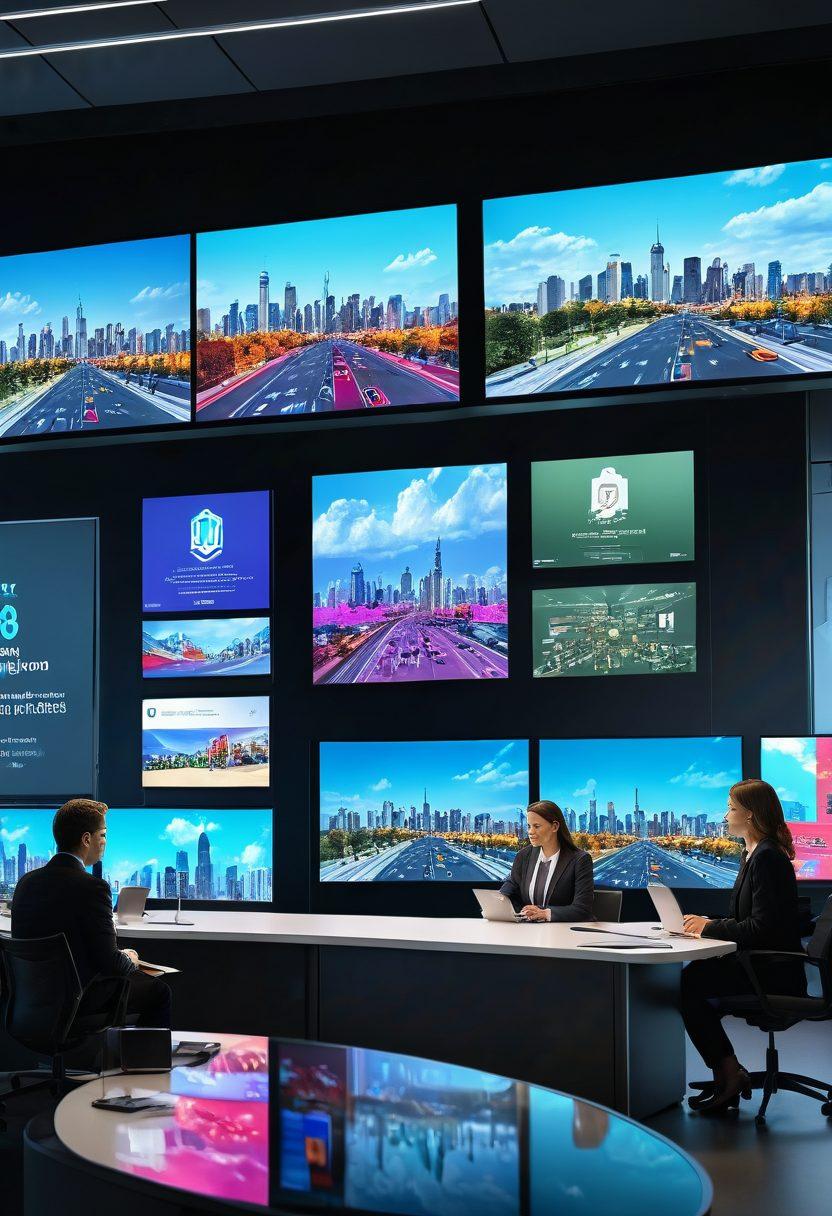Transforming Public Services: The Role of Digital Communication in Government Efficiency
In an age where technology touches every facet of our lives, the role of communication technology in government efficiency has never been more crucial. Picture a world where residents have seamless access to public information at their fingertips—where information services are streamlined, and digital communication becomes the lifeline connecting citizens and their government. As we stand on the precipice of a digital revolution, we must examine how digital infrastructure is not just transforming the way services are delivered but reshaping the entire fabric of public sector technology as we know it. Is our government ready to evolve, or will it remain tethered to outdated practices?
The backbone of this transformation lies in effective communication infrastructure. Think about it: every time a citizen communicates with government services, from filing taxes to applying for healthcare, they are engaging in a digital conversation. This interaction, powered by advancements in information technology management, has the potential to redefine service delivery. Imagine receiving real-time updates about application statuses through apps or platforms, significantly enhancing the transparency and responsiveness of government communication. Isn't it time we demand such efficiency from our public institutions?
However, it's not just about deploying technology; it's about rethinking public policy to leverage these tools for better governance. Technology solutions must be rooted in a framework that fosters trust and accessibility. The beauty of e-government lies in its capacity to foster inclusivity, ensuring every voice is heard. As we blaze the trail towards digital governance, we must ask ourselves: how can we ensure that no one is left behind in this digital leap forward?
In shaping effective technology policy, governments must prioritize both digital services and infrastructure development. A proactive approach means that investing in the latest data services and communication technologies is essential. After all, the efficiency of government services is closely tied to how well these technologies are integrated into everyday administrative processes. Engaging communities in the conversation can lead to innovative ideas that bridge the gap between existing services and the digital world. Have we been truly listening to the voices of the citizens who depend on these public services?
At the heart of this digital revolution is the idea that communication is power. Harnessing information and communication can create a more engaged, informed citizenry that collaborates with government to shape better outcomes. As we venture into this exciting era of transformation, we must cherish the lessons learned from the road behind us while remaining steadfast in our pursuit for efficiency and effectiveness in public service. The question remains: how will you participate in this pivotal moment of change?
Unlocking Seamless Public Services with Innovative Digital Infrastructure
In an era where speed and efficiency are vital, the traditional methods of delivering public services can feel too sluggish for modern society's pacing. Imagine this: it's a busy Tuesday morning, and you need to access essential government services. Instead of navigating complicated bureaucratic processes or waiting in line for hours, a few taps on your smartphone suddenly connects you to a world of streamlined solutions. This evolution in public service delivery isn't just a dream; it's the promise of innovative digital infrastructure unlocking seamless public services across the globe. But how exactly does this transformation take place?
At the core of this transformation lies communication technology. Picture it as the nervous system of digital governance, transmitting information and ensuring that the right data services reach citizens promptly and accurately. When government communication becomes decentralized and digital, it fosters a two-way street of communication, empowering citizens while transforming public policy into a tangible reality. With effective information technology management, local governments can break silos, create user-friendly e-government platforms, and utilize real-time public information, paving the way for a more responsive governance model.
One might wonder, what does this look like in real-life scenarios? Let’s take the example of a city leveraging technology solutions for service delivery. Consider a mobile app that alerts residents about waste collection schedules or road closures. Not only does this enhance community engagement, but it also utilizes valuable communication infrastructure to foster trust in public sector technology. Local governments can tap into such innovative digital communication avenues, allowing them to address residents' concerns rapidly and effectively. It's about enhancing lives through a seamless integration of information and communication.
However, to fully unlock the potential of innovative digital infrastructure, robust technology policy is crucial. It should align with a holistic understanding of infrastructure development, ensuring that both urban and rural areas gain equal access to these services. When we think about digitization, we often focus only on the technology itself, overlooking the importance of strategic public policy. How can we ensure that every citizen, including those in underserved communities, benefits from these advancements? By prioritizing equitable access, we harness the power of digital services for a truly inclusive society.
Ultimately, transforming public services through digital communication is a journey, not a destination. As we test and optimize these strategies, we unlock pathways to innovative solutions that elevate government services and citizen satisfaction. The era of disconnected, bureaucratic inefficiency is fading. Instead, by embracing digital governance and its full potential, we are nearing a future where seamless public services don't just exist—they flourish. Who wouldn't want to be part of this dynamic, engaged community, where the barriers are down, and the channels of communication are wide open?
Enhancing Citizen Engagement: The Impact of E-Government on Service Delivery
In a world increasingly shaped by technology, the way governments communicate and deliver services is evolving at breakneck speed. Have you ever wondered how your local government harnesses the power of digital communication to enhance citizen engagement? With the rise of e-government—a transformative approach to public services—citizens are now more empowered than ever. This evolution is not just about creating a slick interface or streamlining processes; it’s about fostering an environment where communication technology connects governments with the people they serve. What does this mean for you and how can it affect your experience as a citizen?
Consider the last time you tried to access government services. Was it a frustrating experience, filled with confusing paperwork and long wait times? E-government aims to eliminate these hurdles by leveraging technology solutions that simplify service delivery. As each day unfolds in the digital age, citizens can access vital information services with just a few clicks, bridging the gap between public policy and everyday life. Digital infrastructure is the backbone of this transformation, allowing for a seamless flow of public information that can significantly enhance citizen engagement. What if accessing the services you need could be as simple as logging into your favorite app?
How has your perception of government changed with the introduction of digital services? Often, these advancements lead you to feel more involved in civic matters. Citizens today are not just passive recipients of government communication; they are active participants in the democratic process. This shift is supported by robust information and communication strategies that governments are embracing and one simply cannot overlook the role of information technology management in this scenario. By integrating modern communication infrastructure, both citizens and governments can enjoy streamlined interactions that result in better outcomes for all. Can you recall a time when a well-timed notification from your local council changed your perspective on community engagement?
The implications of this digital governance are multifaceted. With enhanced information services backed by effective technology policy, governments can offer personalized experiences to residents, making them feel seen and heard. This is more than just a procedural upgrade; it builds a culture of trust and transparency. A government that listens and responds fosters a collaborative spirit, ensuring that citizens are not just users of services but co-creators in the delivery of those services. So, how often do you think about the role of public sector technology in developing strategies that benefit every citizen?
In conclusion, as we continue to navigate the complexities of the 21st century, enhancing citizen engagement through e-government is essential for reimagining service delivery. The vital role of digital communication cannot be overstated—it’s a bridge connecting governments with the very fabric of their communities. This transformation is not a distant dream; it’s happening right now, bringing about a significant change in how everyday citizens interact with government services. Are you ready to embrace this new era of digital engagement? It’s time to participate, advocate, and shape the policies that will govern our future!


